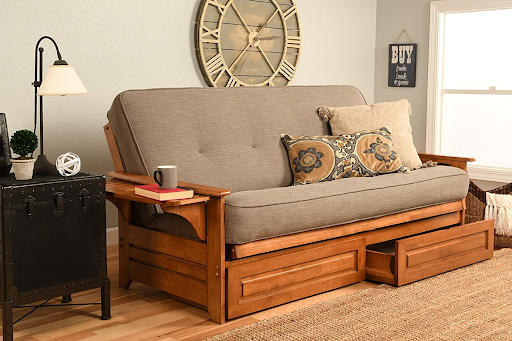As urban areas expand, the need for sustainable and eco-friendly construction practices becomes increasingly vital. Green roofing systems have emerged as an innovative solution to combat environmental challenges while providing numerous benefits to both property owners and the community at large. In this article, we will explore the concept of green roofing systems, delve into the advantages they offer, and discuss how to estimate their costs effectively. Additionally, we will touch upon rainwater management and its significance in enhancing the overall efficiency of green roofing systems.
What are Green Roofing Systems?
A green roofing system, also known as a living roof or eco-roof, involves the cultivation of vegetation on rooftops, either partially or entirely. These roofs comprise a waterproofing layer, a root barrier, a drainage system, a growing medium, and a variety of plants. Green roofs can be extensive, with low-maintenance plants, or intensive, supporting a diverse range of vegetation, including trees and shrubs.
The Environmental Benefits of Green Roofs
Mitigating Urban Heat Islands
Urban areas often experience higher temperatures than their rural surroundings, creating what is known as the urban heat island effect. Green roofs help combat this by absorbing and dissipating heat, thus reducing the overall ambient temperature and enhancing urban comfort.
Improved Air Quality
Plants naturally absorb carbon dioxide and release oxygen through photosynthesis. By installing green roofs, we can mitigate air pollution and improve the quality of the air we breathe, leading to a healthier urban environment.
Biodiversity and Habitat Creation
Green roofing systems provide a habitat for birds, insects, and other wildlife, contributing to urban biodiversity. This ecological balance is crucial for the overall health of the ecosystem.
The Economic Advantages of Green Roofing Systems
Energy Efficiency and Cost Savings
Green roofs act as excellent insulators, reducing the need for excessive heating and cooling in buildings. This energy-saving potential translates into lower utility bills for property owners.
Extended Roof Lifespan
The layer of vegetation and growing medium on green roofs acts as a protective barrier against harsh weather conditions, extending the lifespan of the roof membrane and reducing maintenance costs.
Increased Property Value
Properties with green roofing systems tend to have higher market values due to their eco-friendly features and the positive impact on the surrounding environment.
Factors Influencing Green Roof Costs
The costs associated with green roofing systems can vary significantly based on several factors:
Roof Size and Slope
The size and slope of the roof directly affect the amount of materials and labor required for installation, impacting overall costs.
Roof Accessibility
If the roof is challenging to access, additional equipment or specialized labor may be needed, leading to increased costs.
Type of Green Roof
Extensive green roofs, with simpler plant varieties, generally cost less than intensive green roofs, which may require more complex design and maintenance.
Local Climate
Climatic conditions influence the choice of plants and materials for the green roof, which can impact costs.
Structural Load-Bearing Capacity
The building’s structural capacity must be assessed to ensure it can support the weight of the green roof, and any necessary reinforcements can influence costs.
Estimating Installation Costs for Green Roofs
The installation costs of green roofing systems can typically be broken down into the following components:

Roof Preparation
This includes cleaning the roof surface, repairing any damages, and ensuring a smooth substrate for the green roof installation.
Waterproofing and Drainage
Installing a robust waterproofing and drainage system is critical to prevent water leaks and ensure proper rainwater management.
Growing Medium and Vegetation
The choice of growing medium and plant species affects costs, with more specialized options often being pricier.
Labor and Professional Fees
Skilled labor and professional services from architects and engineers may add to the overall installation costs.
Long-term Maintenance Expenses
Regular Inspections
Green roofs require periodic inspections to identify and address any issues promptly.
Irrigation and Fertilization
Maintaining the health of the vegetation on the green roof may involve regular irrigation and fertilization.
Pruning and Trimming
For intensive green roofs, pruning and trimming of plants are necessary to ensure optimal growth and aesthetics.
Weed Control
Preventing weed growth is crucial to preserving the green roof’s integrity and appearance.
The Role of Rainwater Management in Green Roofing
Rainwater management is a vital aspect of green roofing systems as it helps optimize their efficiency and sustainability.
Rainwater Harvesting
Collecting and storing rainwater from the green roof provides an additional water source for irrigation and reduces the burden on municipal water supply systems.
Stormwater Runoff Reduction
Green roofs help manage stormwater runoff by absorbing and retaining rainwater, preventing overwhelming sewer systems during heavy rainfall.
Improved Water Quality
Rainwater management systems filter and purify water, resulting in better water quality before it is released into the environment.
The Benefits of Rainwater Harvesting
Sustainable Water Source
Rainwater harvesting reduces the dependence on traditional water sources, making it an eco-friendly and sustainable alternative.
Cost Savings
By using harvested rainwater for irrigation and other non-potable purposes, property owners can save on water bills.
Reduced Flood Risk
Managing rainwater effectively minimizes the risk of flooding during heavy downpours, protecting both the property and surrounding areas.
Estimating Rainwater Management Costs
The costs associated with rainwater management depend on various factors:
Rainwater Collection System
This includes the installation of gutters, downspouts, and collection tanks or cisterns.
Filtration and Purification
To ensure the harvested rainwater is suitable for various applications, proper filtration and purification systems are essential.
Maintenance and Inspections
Regular maintenance and inspections are necessary to keep the rainwater management system functioning optimally.
Combining Green Roofing and Rainwater Management
Synergistic Benefits
Integrating green roofing and rainwater management systems enhances the overall environmental impact and sustainability of a building.
Combining Green Roofing and Rainwater Management
Synergistic Benefits
Integrating green roofing and rainwater management systems enhances the overall environmental impact and sustainability of a building. Green roofs absorb rainwater, reducing the burden on drainage systems, while rainwater management systems collect and store excess rainwater, ensuring it can be utilized for various purposes like irrigation and flushing toilets. This harmonious combination creates a closed-loop water cycle that conserves water resources and minimizes the strain on municipal water supplies.
Enhanced Cost-effectiveness
Combining these systems can lead to cost savings in the long run and increase the return on investment for property owners. The reduced energy consumption resulting from green roofs’ insulation properties can lower heating and cooling expenses. Simultaneously, rainwater harvesting reduces water bills, contributing to overall financial savings.
Green Roof Return on Investment (ROI)
Long-term Financial Gains
Although the initial installation costs of green roofs may be higher compared to traditional roofing systems, their long-term benefits more than justify the investment. Green roofs can extend the lifespan of the underlying roof structure, reducing maintenance costs over time. Additionally, energy savings and increased property value contribute to a positive ROI.
Environmental and Social Value
Apart from financial returns, green roofs offer significant environmental and social value. They contribute to the overall well-being of the community by improving air quality, enhancing urban aesthetics, and creating pleasant green spaces in urban environments. These factors contribute to the overall value of the property and the surrounding area.
Green Roofing Incentives and Rebates
Government and Municipal Support
To encourage the adoption of sustainable practices, many governments and municipalities offer incentives and rebates for installing green roofing systems. These incentives may include tax credits, grants, or reduced permit fees, making green roofs a more financially feasible option for property owners.
Environmental Certifications
Green roofing systems can contribute to achieving environmental certifications for buildings, such as LEED (Leadership in Energy and Environmental Design) or BREEAM (Building Research Establishment Environmental Assessment Method). These certifications add further value to a property and can attract environmentally conscious tenants or buyers.
Conclusion
In conclusion, green roofing systems present a compelling solution to address urban environmental challenges and promote sustainable construction practices. With their numerous benefits, including energy efficiency, enhanced property value, and improved air quality, green roofs are becoming increasingly popular worldwide.
FAQs (Frequently Asked Questions)
Are green roofs suitable for all types of buildings?
Green roofs can be adapted to various building types, but factors such as structural capacity, accessibility, and climate should be considered during the planning stage.
Do green roofs require a lot of maintenance?
While green roofs do require some maintenance, extensive green roofs with low-maintenance plants generally require less attention than intensive green roofs.
Can rainwater harvested from green roofs be used for drinking?
Rainwater from green roofs is typically used for non-potable purposes, such as irrigation and toilet flushing, but not for drinking.
How long does it take for a green roof to pay for itself?
The payback period for green roofs can vary depending on factors like location, energy prices, and the size of the roof, but it is generally several years.
Can I install a green roof on an existing building?
Green roofs can be installed on existing buildings, but a structural assessment should be conducted to ensure the building can support the additional weight.



